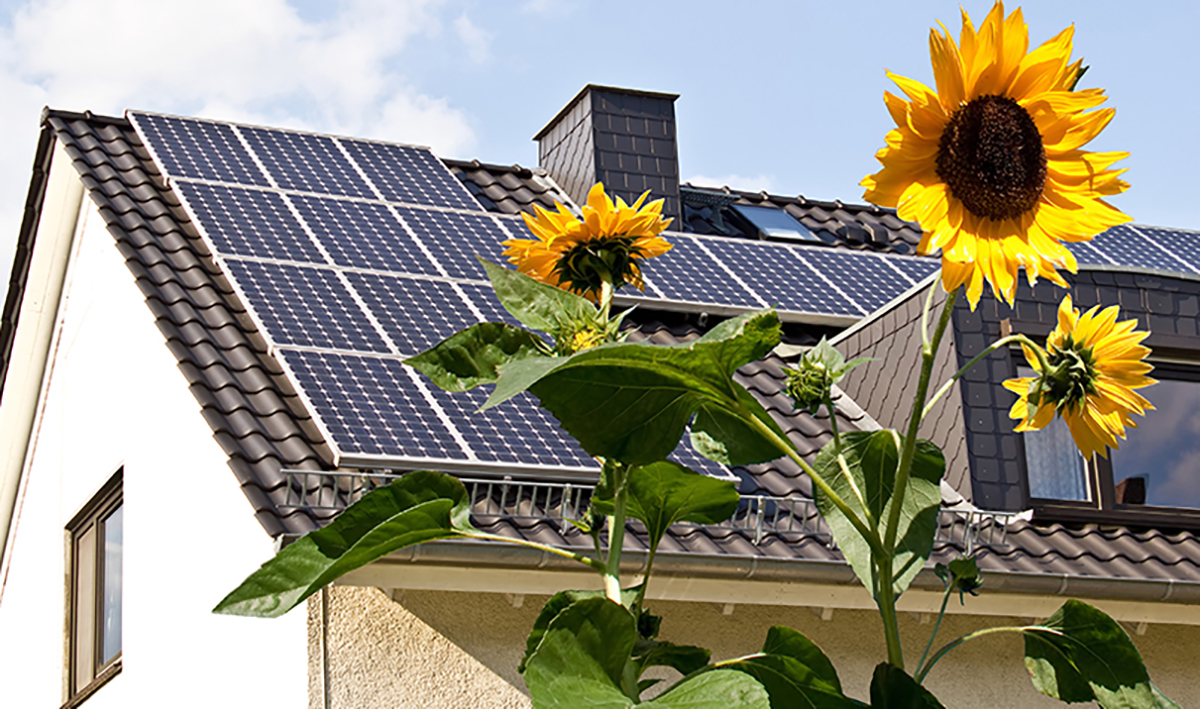Renewable Energy Sources for Your Lake Home

One of the main reasons people reside in New Hampshire is to take advantage of all the natural beauty and outdoor activities the state has to offer. In fact, New Hampshire is home to some of New England’s most magnificent natural wonders, ranging from its largest lake, Lake Winnipesaukee, to its highest peak, Mount Washington. So it’s no wonder the state has taken significant steps to incentivize the use of renewable energy in order to preserve and conserve its natural beauty and resources. If you’re curious about how you can power your lake home in a way that protects the natural environment, here’s an outline of the renewable energy options available in New Hampshire and the corresponding state and federal incentives that will enable you to be green while saving green!
Solar Electric and Thermal Energy
Solar electric or photovoltaic panels are used in a number of different products, ranging from outdoor light fixtures to thermometers to cellphone chargers. But that is just skimming the surface of how solar energy can be used to power your home in a way that is low-maintenance, cost-effective over time, and good for the environment. Photovoltaic modules in a solar panel array directly convert sunlight into electricity and harness the electric currents to power your home. While the upfront cost of installing solar panels can be expensive, it pays for itself over time in the amount of money you save on your energy bills and the amount you may be able to make by “net metering,” or selling your unused renewable energy to your utility company.
A less expensive way to use green energy in your home is by installing a solar thermal system to heat your water. There are several solar hot water systems available and they have all proven to significantly reduce water heating bills by 50-80%.
Wind Energy
A green alternative or supplement to solar energy is wind. Harnessing wind energy is an efficient and reliable way to power your home, but wind systems must be carefully sited to account for wind speed and turbulence. Small wind turbines are available for single-family homes and they have an incredibly simple design. The wind’s kinetic energy rotates the turbine’s rotor blades, converting the kinetic energy to rotational energy, which is then converted to electricity when the shaft connected to the rotor turns. The energy produced by the wind is stored in a generator, from which the home sources electricity when it’s needed.
Geothermal Energy
Although the geology of New Hampshire in all its granite glory presents a unique challenge for the installation of geothermal pipelines, geothermal energy has become an increasingly popular renewable energy source for businesses and homeowners alike. Simply put, geothermal energy is produced by removing abundant warmth or coldness from the earth through a system of underground pipes and an aboveground pump harnesses it to heat or cool your home. Geothermal systems can also be set up to provide a constant source of hot water to your home. One of the drawbacks of geothermal is the expensive upfront cost and relatively long payback period, $20,000-$25,000 for a 2,500 square-foot home and over 15 years, respectively. However, government incentives, technological developments, and competition within the marketplace are making this renewable energy option more economically feasible for homeowners.
New Hampshire offers generous incentives for residential renewable energy systems like solar, wind, and geothermal, including renewable energy property tax exemptions, grants, loans, and rebates. The federal government also offers renewable energy incentive programs that include tax credits and abatements. Homeowners can even receive a capped $7,500 Public Service of New Hampshire award from the state and an uncapped 30% tax credit from the federal government for installing a geothermal system.
Like any home improvement project, installing a renewable energy system is an investment that must be thoughtfully planned out. No single incentive is going to repay your entire investment in renewable energy. But by analyzing all the options and corresponding incentives, you can create a project plan that is tailored to your home site and budget. Using renewable energy to power your home is a sure-fire way to preserve the naturally beautiful New Hampshire we all love for generations to come.
Are environmental benefits paired with economic incentives enough to convince you to make the switch to renewable energy for your home? Which type of renewable energy would you use? Share your thoughts in the comments.


